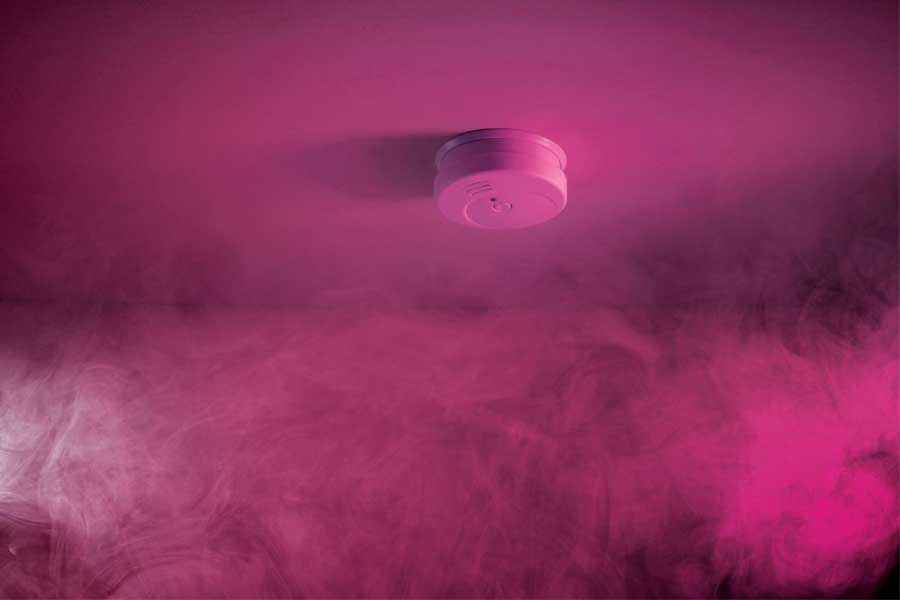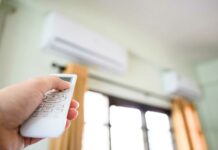You can’t see, taste or smell carbon monoxide, but it can be deadly. Carbon monoxide, or CO, is a gas that is found whenever fuel is burned. Known as the “silent killer,” CO causes an average of 430 deaths per year and more than 20,000 hospital emergency room visits according to the Centers for Disease Control and Prevention (CDC).
Where does carbon monoxide come from?
CO is in fumes produced by items that burn fuel, including kerosene, propane, and gas space heaters, improperly working furnaces, gas water heaters and dryers, wood stoves and fireplaces. Car, truck and boat exhaust fumes contain CO as do fumes from fuel-powered generators and power washers.
How can carbon monoxide poisoning affect your health?
CO is dangerous because it blocks your body from absorbing the oxygen it needs. CO poisoning can occur suddenly or happen over a long period of time. Symptoms depend on the amount of CO a person is exposed to, the length of time exposed, and the general health and age of the person. Mild symptoms may seem like the flu and include: mild headache and weakness, dizziness, sleepiness, shortness of breath, tightness in the chest, nausea and/or vomiting. High levels of CO or lower levels of CO exposure that last a long time can cause confusion, loss of muscle control, blurred vision, extreme headache, weakness, fainting, convulsions and even death.
Who is most at risk of harm to their health?
Anyone can be at risk for carbon monoxide poisoning. However, those most at risk are:
- infants,
- the elderly, and
- people with heart disease, lung disease, or anemia.
What should you do if you have symptoms of carbon monoxide poisoning?
- Go outside and get fresh air immediately!
- Call 911 and tell them you think you have carbon monoxide poisoning, or go to the emergency room if you are able to get there without help.
- A simple blood test done at the hospital can usually detect carbon monoxide poisoning. Medical treatment is available.
What can you do to prevent carbon monoxide poisoning?
- DO purchase and install carbon monoxide detectors that meet Underwriters Laboratories (UL) standard 2034-95. Follow the manufacturer’s instructions for proper placement, use and maintenance. If the detectors plug into the wall, be sure they have a battery backup.
- DO leave the house if the alarm sounds on your CO detector. Go to a hospital emergency room or call 911 if anyone is feeling sick. If no one is sick, call the emergency number for your heating service or 911. Stay out of the home until your heating service or fire department says it’s okay to go in.
- DO have a heating professional inspect, clean, and adjust your fireplace, wood stove, gas appliances including furnaces and water heaters, and chimneys/vents every fall—before the start of home heating season.
- DO purchase gas appliances that vent their fumes to the outside. Have them installed by a heating professional.
- DO read and follow all of the instructions for any fuel-burning devices.
- DO make sure that your car, truck, or boat has a working, airtight exhaust system. Repair exhaust leaks immediately.
- DO pay attention to symptoms (headache, dizziness, tiredness and/or a sick feeling in your stomach), especially if more than one person is feeling sick or if people and pets are feeling sick.
- DON’T operate fuel-powered machines such as generators, power washers, or mowers in buildings or semi-enclosed spaces.
- DON’T cook or heat with a grill indoors, even if you put it inside a fireplace.
- DON’T run vehicles in the garage, even if the door is open. Carbon monoxide can build up quickly and enter your vehicle and home.
- DON’T sit in a parked vehicle with the engine running for a long period of time, especially if your car is in snow.
- DON’T use gas stoves or ovens to heat your home.
- DON’T use an un-vented gas or kerosene space heater indoors.
- DON’T close the damper to the fireplace unless the fire is completely out and the coals are cold.
- DON’T ride in covered pickup truck beds or campers. Air moving around the vehicle can draw exhaust in.
- DON’T swim or play near the back of a boat where the motor gives off exhaust.
- DON’T ignore symptoms! You could die within minutes if you do nothing.






